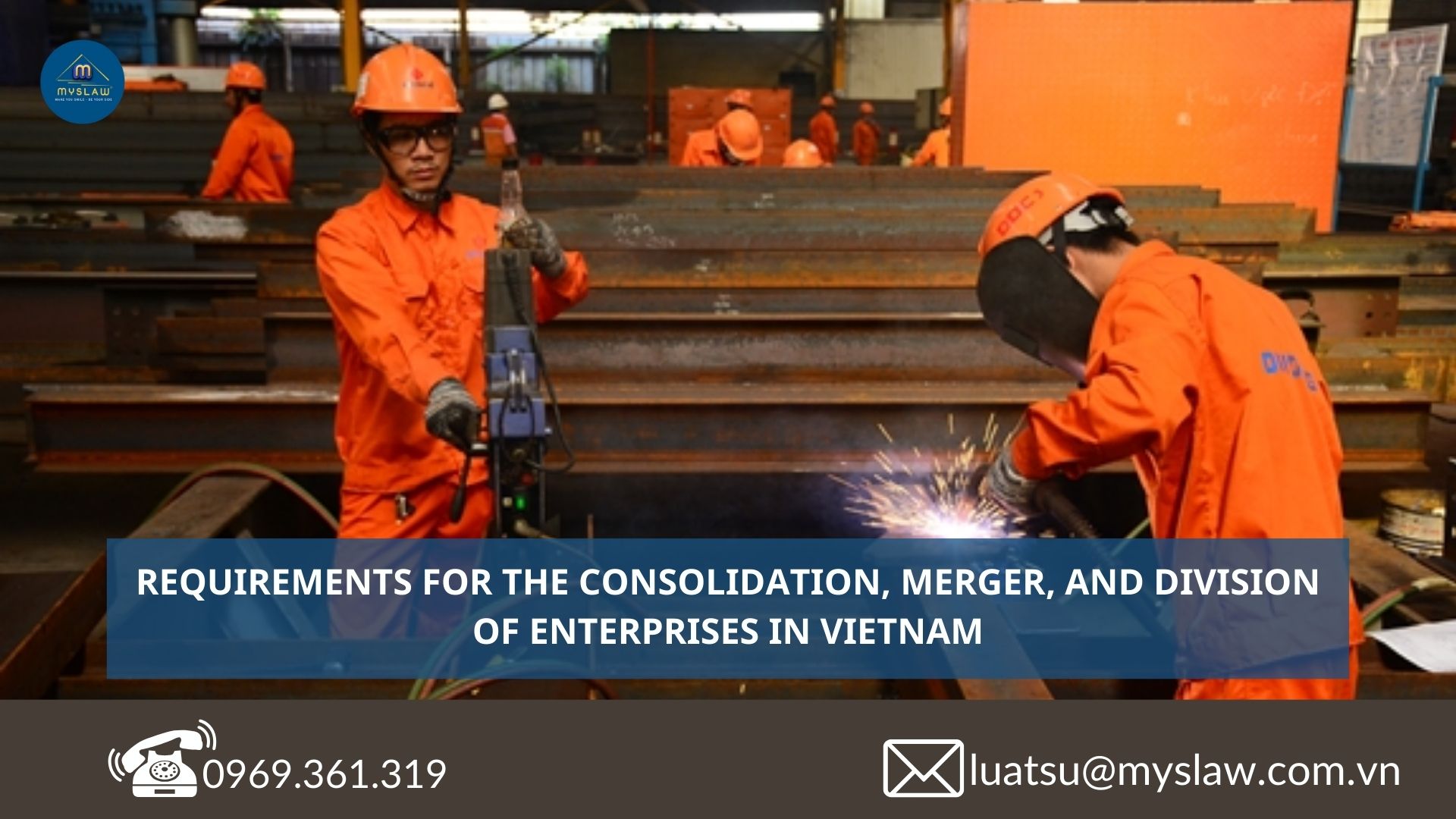Consolidation, merger, and division of enterprises in Vietnam are regulated by specific legal frameworks, particularly Decree 23/2022/ND-CP. These processes are essential for improving corporate structure, facilitating strategic growth, and optimizing resource utilization. Below is an overview of the requirements and procedures for consolidation, merger, and division of enterprises in Vietnam.

1. Types of Corporate Restructuring in Vietnam
According to Article 13 of Decree 23/2022/ND-CP, the following are the types of corporate restructuring allowed in Vietnam:
- Consolidation of State-Owned Enterprises: Two or more wholly state-owned enterprises can consolidate to form a new wholly state-owned enterprise, after which the original enterprises will cease to exist.
- Merger of State-Owned Enterprises: One or more wholly state-owned enterprises may merge into another wholly state-owned enterprise, transferring all assets, rights, obligations, and lawful interests. The merged companies will cease to operate independently.
- Full Division of State-Owned Enterprises: A wholly state-owned enterprise can divide its assets, rights, and obligations to create two or more new wholly state-owned enterprises. The original enterprise ceases to exist after the division.
- Partial Division of State-Owned Enterprises: A wholly state-owned enterprise can partially divide its assets, rights, and obligations to form new enterprises, while the original enterprise continues to exist.
2. Legal Requirements for Consolidation, Merger, or Division
As outlined in Article 14 of Decree 23/2022/ND-CP, several conditions must be met for the consolidation, merger, or division of wholly state-owned enterprises:
- The restructuring must align with the approved organizational or innovation plans for the enterprise, as specified by the Prime Minister. If the enterprise does not fall under these plans, the representative agency of the owner must submit the matter to the Prime Minister for approval.
- Any new enterprises formed following a full or partial division must meet the requirements for enterprise formation under Article 4 of the Decree.
- Consolidation and mergers must comply with Vietnam’s Competition Law to ensure that they do not negatively impact market competition.
3. Authorities Responsible for Approving Consolidation, Merger, or Division
The authority responsible for approving the consolidation, merger, or division of enterprises depends on the decision-making process:
- For Enterprises Managed by the Same Authority: If the enterprises involved in the restructuring are under the jurisdiction of the same decision-making authority, that authority will be responsible for approving the consolidation, merger, or division.
- For Mergers by Different Authorities: In cases where the enterprises are established by different authorities, the decision-making authority of the acquiring company will issue the merger decision. If either the acquiring or acquired company is established under the Prime Minister’s decision, the Prime Minister will issue the final merger decision.
- For Consolidation by Different Authorities: When enterprises under different authorities are consolidated, the authority designated by the Prime Minister to represent the owner’s rights will approve the consolidation. If one or more of the enterprises were established under the Prime Minister’s decision, the Prime Minister will make the final consolidation decision.
The above information is provided by Mys Law. For any questions regarding the content of this article, please contact 0969.361.319 or email: [email protected] for further clarification. Best regards!
Compiler: Nguyen Anh Quan





